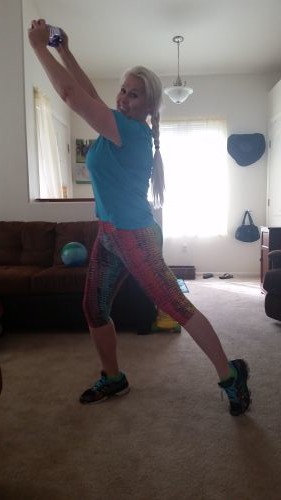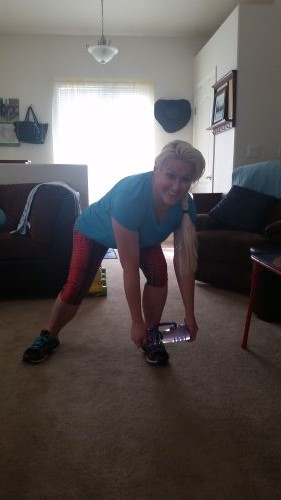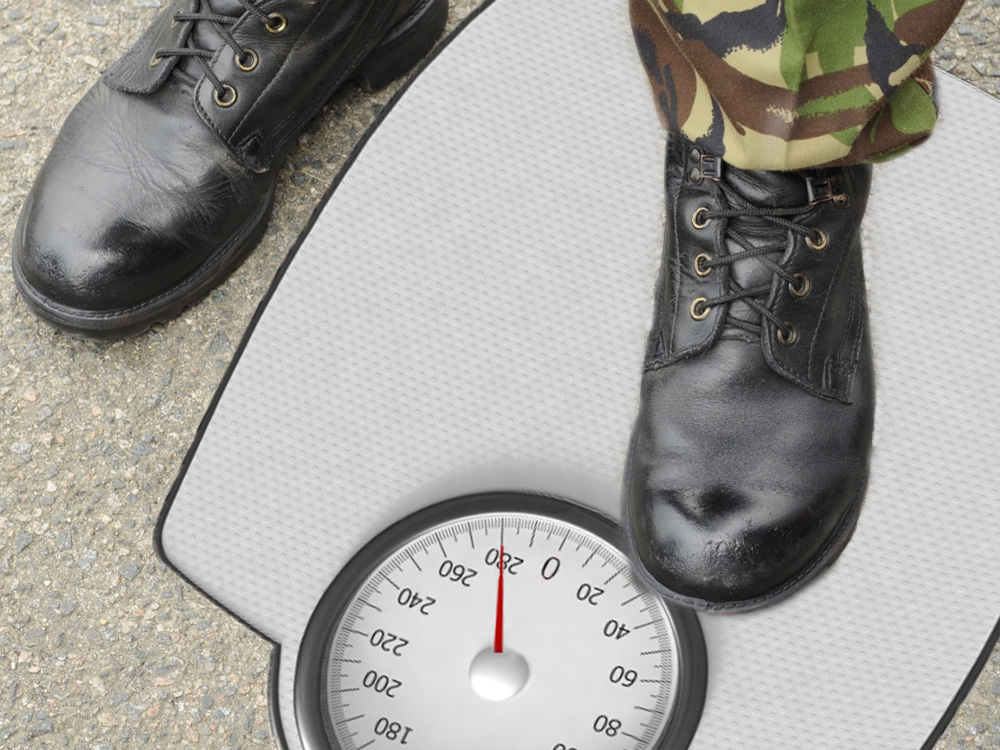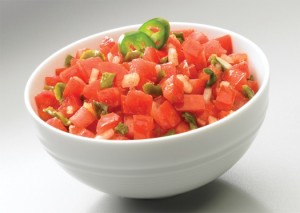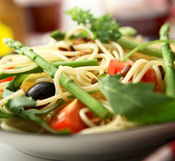October 19, 2015
June 4, 2012
Top 10 Tips For Staying Motivated With Your Workout Plan
- Vary your routine or change your scenery! A new variation on your favorite activity — cardio kickboxing instead of Step aerobics; power yogainstead of working on machines — may be enough to reinvigorate a stale routine. If you’ve always exercised indoors, move your workout outside for a welcome change of scenery.
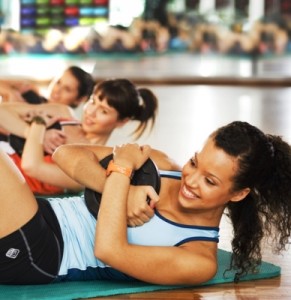
- Try something entirely new! Make it something you never dreamed you’d do. If you’ve always stuck to solitary pursuits, sign up for a team sport. Or tackle something you’ve shied away from… maybe even rock climbing!
- Find a workout buddy! Exercise companions add a social element to any routine. Ask a friend to be your workout partner — you won’t skip a workout if someone is waiting for you.
- Set a new goal! Working out to stay in shape is fine, but setting a goal — such as finishing a 10k race or completing a rough water swim — will give your daily workouts more meaning.
- Treat yourself to a workout gadget or accessory! Heart-rate monitors, aquatic toys and other exercise gadgets can make your workouts more fun and challenging.
- Keep an exercise log to track your progress! Unsure if your making progress toward your goals? Then start a workout log. It allows you to keep track of your goals, monitor your progress and adjust your routines as necessary.
- Don’t berate yourself if you miss a workout! Life is full of obstacles. Unexpected appointments, illness and setbacks are bound to happen sooner or later. Don’t let a few missed workouts turn into a month of unfulfilled resolutions.
- Reward yourself! Reaching a fitness goal or milestone is a great excuse to treat yourself to something new. A massage, an evening out, or some other “indulgence” may be the key to staying motivated.
- Focus on how good exercise makes you look and feel! You know that incredibly satisfied and healthy feeling you get immediately after a workout? Remember it! And use it to motivate yourself the next time you’re thinking about blowing off that next workout!
- If all else fails… take a break from exercise! Sometimes a lack of motivation is your body’s way of telling you to take a break. If anything hurts, or if your energy is running low, take a break for a few days before resuming your workouts. A little “R&R” may be just what your body needs to renew your motivation.
–
Source: Health Discovery
May 30, 2012
March 27, 2012
Fitness Tips: Curls for the well-armed
Curls for the well-armed
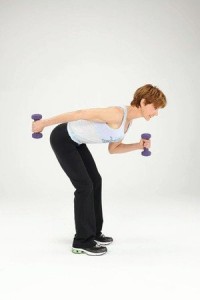
Use light weights in this exercise for a convenient, fast and effective way to work the fronts and backs of your arms at the same time. Remember to pull your abdominal muscles in to support your spine in this forward bend.
Stand with your feet about shoulder-width apart. Grasp a pair of 3- to 5-pound dumbbells, bend your knees slightly and lean forward so your torso is almost parallel to the floor. Keep your elbows next to the sides of your torso. Straighten your right arm behind you until your elbow is straight and next to your body. Simultaneously, bend your left arm to bring the dumbbell close to your left shoulder. Pause for 2 seconds in this position.
Repeat the same movement again, but this time straighten your left arm behind you and bend your right arm forward. Continue to alternate arms until you have completed 32 biceps curls and 32 triceps extensions with each arm. Focus on keeping your upper arms close to your torso as you perform this move. Stand up, rest for 15 seconds and repeat two more sets.
March 24, 2012
Army Steps Up Efforts to Get New Troops Fit
Shape Up, Soldier!
Soldiers can still find pancakes on the chow line at the U.S. Army’s Fort Leonard Wood training facility in Missouri. But now they’re made with whole-grain batter — adding more fiber and protein.
The new focus on nutrition is part of a ‘Fueling the Soldier’ initiative that aims to teach soldiers to make healthier choices during military training and in combat.
“The Army must treat our soldiers as tactical athletes to improve not only physical training but also trying to get them to adapt the right nutritional aspects to help prepare them for the battlefield and for their life,” Lt. Gen. Mark Hertling said in a statement.
Hertling is overseeing an overhaul of physical readiness training. In fact, the Army is tossing out the old training manuals, and taking a new approach to basic training.
Gone are the long endurance runs, which officials say can lead to injuries in new recruits who aren’t accustomed to the mileage.
Instead, soldiers will be coached by trainers to do a whole range of exercises that build core strength, flexibility and endurance. Training will be tailored to a soldier’s level of fitness.
A new cafeteria Fort Leonard Wood was also unveiled today. As soldiers walk down the cafeteria line, they see foods marked with red, yellow or green labels.
Green marks high-performance foods, and posters nudge the soldiers to “Go For Green” frequently.
In addition, the cooks have turned off fryers and started baking more entrees. They’re also adding lots of ‘nutrient-dense’ menu options made from fresh food.
To help reinforce these messages, drill sergeants will give one-hour courses in “performance nutrition.” Maybe Shots can invite them over for dinner with our kids?
Why the change in approach? Well, army recruits mirror the general population, which is trending toward the ‘heavier’ side—to put it politely.
More than 9 million Americans of prime recruiting age are too heavy to join up, according to Mission: Readiness, a group of retired senior military officials pushing for better fitness for young people.
Enlisted men and women are no exception. A 2008 Department of Defense survey found that 38 percent of people enrolled in the military health system were overweight or obese.
The new training plan incorporates physical therapists and sports trainers at the unit level to promote proper techniques and injury prevention
If you’d like to see how the Army is putting its soldier-as-athlete model into action, you can download a free iPhone app called “Army Physical Readiness Training.” It was developed by programmers at the U.S. Army Center of Excellence at Fort Gordon, Ga.
The Army plans to make the changes at its other training installations in Fort Sill, Okla.; Fort Benning, Ga.; Fort Jackson, S.C.; and Fort Knox, Ky. in the coming months
—
Original Article from NPR Health
March 22, 2012
Hot Salsa Tip
Did you know that salsa has surpassed ketchup as America’s favorite condiment? Salsa can spice up all kinds of bland meals. Stir in a jar of your favorite salsa to add some zing to a pot of kidney, white, pinto, red or black beans; then top with a dollop of sour cream for a unique, high-fiber side dish.
March 20, 2012
Fuel Up!
Wow, this is great!
This one simple step alone will not only lengthen your workout, but it will also increase your performance, which is the key when training and exercising. That step? Fill ‘er up! If you don’t eat before exercise, you will likely feel light-headed, fatigue and nausea. Your body is then forced to turn to muscle protein for fuel because it doesn’t have enough carbohydrates to perform.
By starting your workout well-fueled, your body will burn a combination of the carbohydrates and stored fat. So fill ‘er up…and here are the food and beverage tips from your coach Max: Eat 1 hour before a workout or event. Choose a high carbohydrate, low fat, moderate protein meal or snack. And don’t forget to hydrate. Drink at least 10 ounces of water to help offset perspiration loss during your workout.
March 19, 2012
6 Fitness Tips to Follow While Traveling
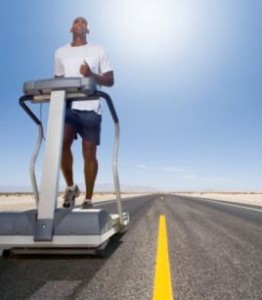 If on the whole you make the effort to eat healthy and have an effective exercise regime, you are likely to be concerned that any travel plans will derail this process. So here are some tips that will help you continue with your fitness programs even when you travel.
If on the whole you make the effort to eat healthy and have an effective exercise regime, you are likely to be concerned that any travel plans will derail this process. So here are some tips that will help you continue with your fitness programs even when you travel.
1. Do some homework before you leave. Check if the hotel that you plan to stay in has gym facilities or a pool and so on (depending upon your preferred workout activity).
2. Remember to pack workout clothes and shoes. This will remind you to work out and also make it convenient to hit the gym or simply head out for a walk wherever you are staying.
Workout shoes can be bulky so rather than carrying them in your baggage, you can simply wear them when you travel and instead pack the other less bulky shoes into your bag.
3. Carry a jump rope or a couple of dumbbells or kettle bells with you. A session with the jump rope can be a really strenuous workout in a short time, and doing a few weights with dumbbells or even lifting some bottles of bottled water can be a good workout.
4. Do other exercises that don’t need equipment – pushups, leg raises, squats, lunges and stair climbing are all easy to do wherever you are.
5. When eating out, order items that are steamed, grilled or poached. Avoid the items that are fried or calorie rich – if it says ‘crispy’ or ‘golden’, it’s probably been deep-fried, if it says ‘rich gravy or dressing’ that means high in calories too.
Also remember if it is a salad you’re ordering, ask for vinaigrette dressing rather than a cream or mayo-based one. Order small portions and opt for fruit instead of a confection at the end of the meal
—
Courtesy from FitnessHealthZone
June 2, 2011
The myth of ripped muscles and calorie burns
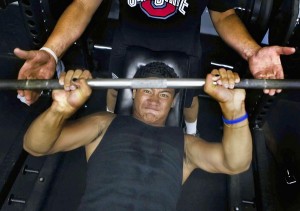
Weight training can build muscle, but that doesn't mean you start burning calories like a Hummer burns gasoline. (Mark Boster, Los Angeles Times / May 16, 2011)
Sorry to say, but gaining muscle doesn’t make your metabolism skyrocket. Put down that Haagen-Dazs.
Whenever I hear about some amazing way to boost resting metabolism, my male-bovine-droppings detector goes berserk. Take the perennially popular one stating that 1 pound of muscle burns an extra 50 calories a day while at rest — so if you gain 10 pounds of muscle, your resting metabolic rate (RMR) soars by an extra 500 calories each day.
Awesome!
And also drivel. I’m more likely to believe bears use Porta-Potties and the pope is a Wiccan.
Though its origins are uncertain, any number of fitness magazines have made the “50 calories per pound of muscle” statement. Popular weight-loss gurus have jumped on the muscle-building-as-panacea-for-fat-loss bandwagon as well.
Dr. Mehmet Oz said in a 2007 presentation to the National Cosmetology Assn., “Muscle burns about 50 times more calories than fat does.” Bill Phillips wrote in his bestselling “Body for Life” that, “through resistance training, you can also significantly increase your metabolic rate … weight training is even superior to aerobic exercise for people who want to lose weight.” And Jorge Cruise wrote in “8 Minutes in the Morning” that his exercise regimen “will help you firm up five pounds of lean muscle within the first few weeks, allowing your body to burn an extra 250 calories per day.”
Gain 5 pounds of muscle in the first few weeks? If only.
Let’s use me as an example. I’ve added about 20 pounds of muscle through several years of hard weightlifting. If this myth holds true, I’ve gained 1,000 calories of additional resting metabolic rate each day. Well, I keep pretty close tabs on my energy balance, and I can guarantee this isn’t happening. Too bad, because those extra 1,000 calories a day could translate to a gluttonous feast of salt-and-vinegar potato chips and cookie dough ice cream.
Beyond making me the go-to guy for opening pickle jars, what other contributions are made by that extra muscle? To get the answer, I spoke with Claude Bouchard of the Pennington Biomedical Research Center in Baton Rouge, La., who has authored several books and hundreds of scientific papers on the subject of obesity and metabolism. Bouchard told me that muscle, it turns out, makes a fairly small contribution to RMR.
“Brain function makes up close to 20% of RMR,” he said. “Next is the heart, which is beating all the time and accounts for another 15-20%. The liver, which also functions at rest, contributes another 15-20%. Then you have the kidneys and lungs and other tissues, so what remains is muscle, contributing only 20-25% of total resting metabolism.”
So, if you slave at weightlifting and increase your muscle mass by an ambitious 20%, this translates into only a 4% to 5% increase in RMR. Since a 200-pound man has an RMR of roughly 2,000 calories, a 20% increase in muscle mass equals only an 80- to 100-calorie increase.
For fun, let’s run the numbers in even more detail, adding the role played by body fat. Bouchard sent me a follow-up email explaining that — based on the biochemical and metabolic literature — a pound of muscle burns six calories a day at rest and a pound of fat burns about two calories a day, contrary to what the myth states. So, muscle is three times more metabolically active at rest than fat, not 50 times.
Again, let’s use me as a guinea pig and do the math. The 20 pounds of muscle I’ve gained through years of hard work equate to an added 120 calories to my RMR. Not insignificant, but substantially less than 1,000. However, I also engaged in a lot of aerobic activity and dietary restriction to lose 50 pounds of fat, which means I also lost 100 calories per day of RMR. So, post-physical transformation, my net caloric burn is only 20 calories higher per day, earning me one-third of an Oreo cookie. Bummer.
Don’t think I’m down on weights; I lift four hours a week because it’s awesome. It makes me stronger, increases my bone density and improves the strength of my connective tissues. It hardens me against injury from other activities. And my wife says that it makes me pretty from the neck down.
Bill Phillips told me through an assistant that weightlifting is better for fat loss because “each new pound of muscle tissue increases chronic total energy expenditure/metabolism” and that “aerobic exercise alone does not offer this benefit.” However, a sizable body of research shows that intense aerobic activity like running burns twice as many calories per hour as hard weightlifting, and the metabolic boost from added muscle is not nearly enough to compensate for this difference.
(I should note that Phillips and I are on the same general side in that we both recommend a combination of aerobic training and weightlifting.)
But wait! When you factor in “after burn,” couldn’t weightlifting still be some miracle calorie-consumer? Sorry, Conan, but after-burn — technically called excess post-exercise oxygen consumption, or EPOC — does exist, but only to a small degree. As I’ve covered in an earlier column, the EPOC of interval training is insignificant. And the same holds true for weightlifting.
A quick scan of the research:
• In 1995, researchers at the University of Limburg in the Netherlands published a study in Medicine & Science in Sport & Exercise on 21 male subjects and determined that weight-training “has no effect” on RMR.
• In 1994, researchers at the Royal Veterinary and Agricultural University in Denmark compared 10 bodybuilders with 10 lean (you are so puny!) subjects. Published in the American Journal of Clinical Nutrition, the report found that intense weight-lifting did not result in any measurable EPOC.
• In 1992, researchers from the University of Texas at Austin compared intense weightlifting with intense aerobic exercise on 47 males and reported in the American Journal of Clinical Nutrition that “RMR did not significantly change after either training regimen.”
Certainly the act of weightlifting burns calories, but intensity makes a big difference. In 1988, researchers at the University of Alabama in Birmingham published a study in the Journal of Applied Sport Science Research that used 17 subjects to compare the caloric burn of light versus heavier weightlifting.
When accounting for the same total volume of weight lifted (lifting 100 pounds three times is the same “volume” as lifting 300 pounds once), they found that when people lifted at 80% intensity, they burned three times as much energy as lifting at 20% intensity.
All of this, in any case, ignores the most important part of weight loss: what you eat. “The bottom line is that weight loss is 90% about diet,” obesity researcher Dr. Sue Pedersen, a specialist in endocrinology and metabolism in Calgary, told me. “The studies show that exercise alone is not going to result in weight loss.”
In other words, hours of running and weightlifting won’t burn your belly fat if you fuel that exercise with Haagen-Dazs.
April 30, 2011
Tall, obese men at higher risk for blood clots
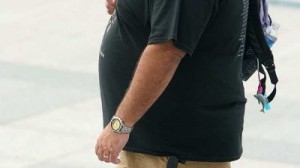
Tall men, especially if they are obese, are at a greater risk for blood clots than shorter, normal-weight men, suggests a new study. (AFP / Getty Images / April 29, 2011)
Tall and obese men appear more likely to develop venous thromboemoblism, which can lead to a potentially lethal blood clot in the lungs, according to a study published Thursday.
Researchers from the University of Tromso in Norway analyzed height and weight data from 26,714 people and assessed the incidence of venous thromboembolism over 12-1/2 years. In that time, 461 people developed the condition, in which a blood clot (or thrombosis) forms in a deep vein, usually in the thigh, and can move into an artery in the lung. Here’s a basic explanation of the condition fromPatient Health International and a detailed look, including risk factors, from Cleveland Clinic.
In the lung, the clot (called a pulmonary embolism) blocks blood supply and can lead to death. The American Heart Assn. offers this look at venous thromboembolism incidence and fatality statistics.
It begins: “Venous thromboembolism occurs for the first time in about 100 per 100,000 persons each year in the United States. About one third of patients with symptomatic VTE manifest pulmonary embolism, whereas two thirds manifest deep-vein thrombosis alone.”
The new research suggests that being either obese or tall, or the combination, puts men at greater risk for the condition compared to short (5 feet 7.7 inches or shorter), normal-weight men. Men who were obese and taller than 5 feet 11.7 inches were at fivefold greater risk of a blood clot, and men who were tall but of normal weight had a 2.6 times greater risk. Short, obese men had a 2.1 greater risk than short normal-weight men for a blood clot.
Yes, women too: Obese women, short or tall, had a slightly greater risk of a blood clot, scientists reported in Arteriosclerosis, Thrombosis, and Vascular Biology. Tall normal-weight women didn’t have increased risk.
Obesity is already a well-known risk factor for deep-vein thrombosis, but researchers aren’t sure why tall people would be more prone to such clots. The lead author of the study, Sigrid Braekkan, offers an explanation in a press release:
“In tall people the blood must be pumped a longer distance by the calf-muscle pump, which may cause reduced flow in the legs and thereby raise the risk of clotting,” Braekkan said.
There’s nothing a man can do about his height, so researchers say big men – and short ones, of course — should try to stay slim.
In the meantime, here are a few tips for preventing blood clots from the Agency of Healthcare Research and Quality:
— Don’t remain sedentary for more than an hour.
— On plane trips, get up from your seat and move around.
— Try not to cross your legs
— Wear loose-fitting clothing
— Reduce salt in your diet
And here are some tips from the same agency on preventing venous thromboembolsim in the hospital. There, it’s the most common cause of preventable death.
